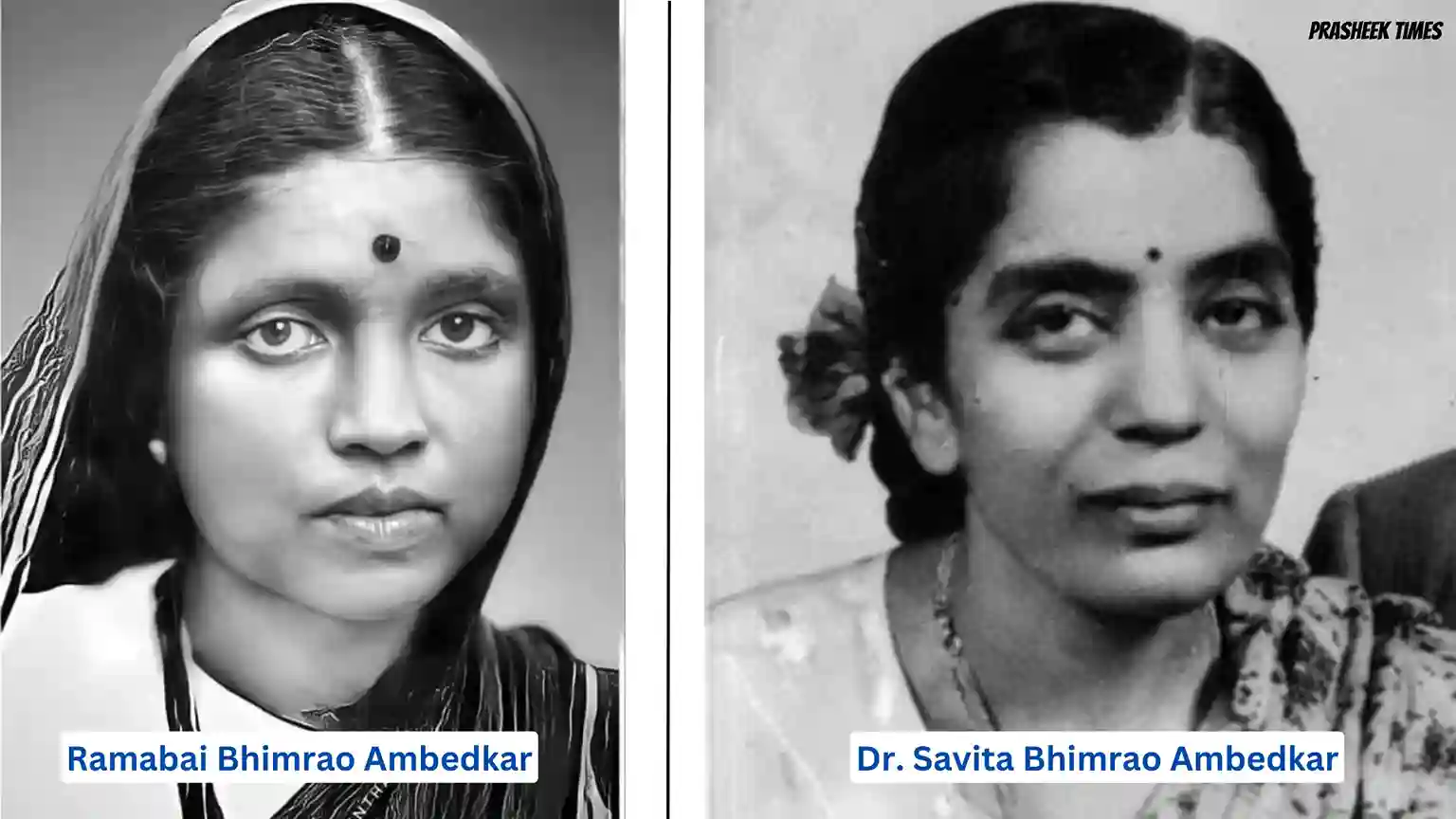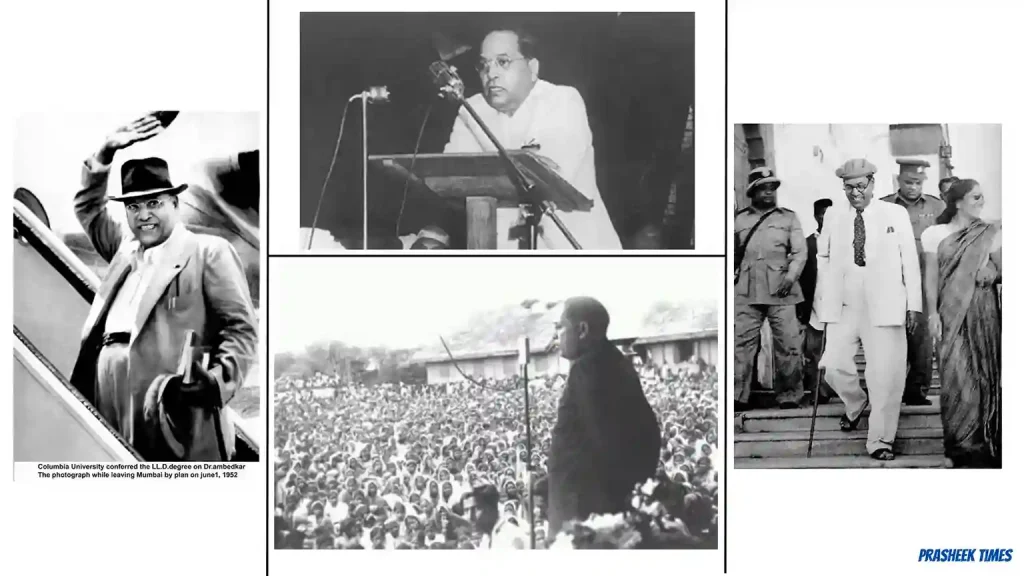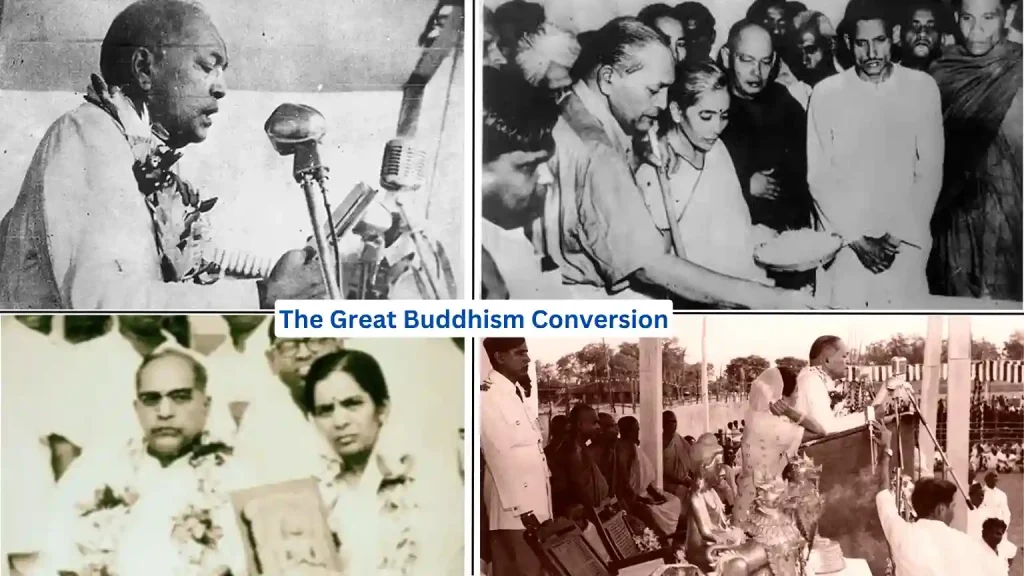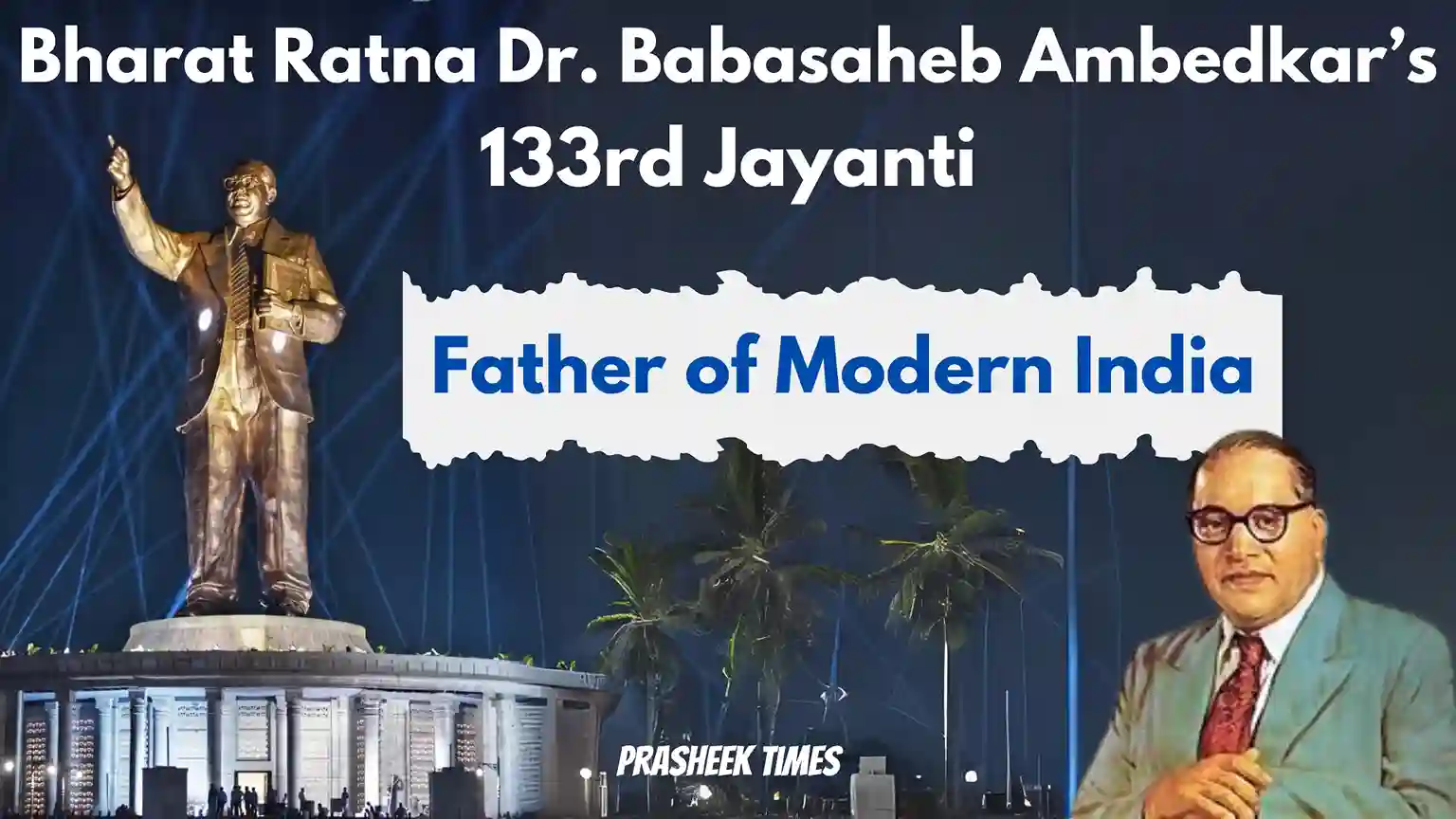Dr. B. R. Ambedkar’s Jayanti Celebration
Be educated, be organized, & be agitated, the quote of Bharat Ratna Dr. Babasaheb Ambedkar’s still makes every citizen prosperous and strong. Let’s be informative on this auspicious day because our Father of Modern India, Babasaheb himself said “Education is what makes a person aware of his existence, potential and power.”
On 14th April 2024 whole world celebrated Dr. Babasaheb Ambedkar’s 133rd Birth Anniversary (Jayanti). People celebrate Jayanti both at the individual (at home) level and jointly in social ways (publicly) by local and different organizations. This celebration continues up to 2 months.
On this precious day let’s try to know and learn about Dr. Ambedkar’s life and his valuable teachings.
Babasaheb’s birth:
Dr. Bhimrao Ramji Ambedkar, affectionately known as Babasaheb, was born on April 14, 1891, in the small town of MHOW (Military Headquarters Of War), officially Dr. Ambedkar Nagar, is a town in the Indore district in Madhya Pradesh state of India. Son of Bhimabai Sakpal and Ramji Maloji Sakpal who was a Subedar (was the second-highest rank of Indian officers in the military forces of British India). Babasaheb’s birth wasn’t just a mere event but marked a great drastically change and upgradement of a transformative journey that left an Incredible and indelible mark on socio-political landscape of India.
Babasaheb was born in Mahar caste, in that period time of India there were immensely belief of Chatur Varna (4 levels Cast discrimination which was Brahmin, Kshatriya, Vaishya, Shudra). Being born in untouchable and in rigid caste and also growing up in such a circumstance the environment marked by discrimination and social ostracization, Babasaheb faced numerous obstacles. Where people were not be get treated like humans by other so called upper castes of that time, for instance, denied permission to drink water from public water spots like well, river, pond.
No rights to learn, Low level discriminative treatment and also discrimination with cloths, food and shelter. Other students were used to discriminate Babasaheb and they had forced him to sit outside the classrooms. Despite all these numerous tremendous obstacles, Babasaheb never stopped his fight against this social ruling and discriminative mentality, Babasaheb pursuit of knowledge remained undeterred.
On 1894 Ramji Sakpal retired so the family moved to Satara from MHOW(Mahu) two years later. Shortly after that Bhimabai died and the children’s parental care was taken by Ambedkar’s aunt. Three sons – Balaram, Anandrao and Bhimrao – and two daughters – Manjula and Tulasa – of the Ambedkar’s survived them.
His father gave him the name Ambadawekar at school instead of Sakpal, which indicates that he is from the Ratnagiri district’s Ambadawe village. His Marathi Brahmin instructor, Krishnaji Keshav Ambedkar, altered his surname in school records from “Ambadawekar” to his own surname, “Ambedkar.”
Babasaheb’s Education:
Ambedkar’s Family moved to Mumbai in 1897, where Ambedkar became the only untouchable enrolled at Elphinstone High School. In 1907 he passed his matriculation and entered Elphinstone College and he was first from his Mahar Caste. The community organized a public ceremony to celebrate his achievement, and it was during this event that Dada Keluskar, a family friend and author, gave him a biography of the Buddha, this book had an great impact on 16 years old Bhimrao.
By 1912, he obtained his degree in Economics and political science from Bombay University (now University of Mumbai) and prepared to take employment with Baroda state government.
In 1913, at the age of 22, Ambedkar was rewarded a Baroda State Scholarship of£11.50 (Sterling) per month for three times under a scheme established by Sayajirao Gaekwad III (Gaekwad of Baroda) that was designed to provide opportunities for postgraduate education at Columbia University in New York City. Soon after arriving there, he settled in apartments at Livingston Hall with Naval Bhathena, a Parsi who was to be a lifelong friend. He passed his M.A. test in June 1915, majoring in economics, and other subjects of Sociology, History, Philosophy and Anthropology. He presented a thesis, Ancient Indian Commerce. Ambedkar was influenced by John Dewey and his work on democracy.
In 1916, he completed his alternate master’s thesis, National tip of India – A Historic and Analytical Study, for a second M.A. On 9th May, he presented the paper Castes in India Their Medium, Genesis and Development before a seminar conducted by the anthropologist Alexander Golden Weiser. Ambedkar received his Ph.D. degree in economics at Columbia in 1927.
In October 1916, he enrolled for the Bar course at Gray’s Inn, and at the same time enrolled at the London School of Economics where he started working on a doctoral thesis. In June 1917, he returned to India because his scholarship from Baroda ended.
His book collection was dispatched on a different ship from the one he was on, and that boat was torpedoed and sunk by a German submarine. He got permission to return to London to submit his thesis within four times. He returned at the first opportunity and completed a master’s degree in 1921. His thesis was on” The problem of the rupee Its origin and its result”. In 1923, he completed a D.Sc. in Economics which was awarded from University of London, and the same time he was called to the Bar by Gray’s Inn. D.Litt in 1953 from Usmania University.
In his lifetime, he earned a total of 9 degrees, which were B. A, M. A (2), M.Sc, D.Sc (U.K.), PhD (USA), LLD (Columbia), D.Litt and Bar-at-law (London).

Babasaheb’s marriage:
Ramabai Bhimrao Ambedkar:
Born: 7th Feb. 1898
Death: 27th May 1935
Mata Ramai married Babasaheb on 4th April 1906 in very a simple and normal ceremony and that to in the vegetable market of Byculla, Mumbai. She was Nine and Ambedkar was Fifteen, His affectionate name for her was “Ramu”, while she called him “Saheb”. They had 5 childrens – Yashwant, Gangadhar, Ramesh, Indu (Daughter) and Rajratna, Apart from Yashwant, the other four died in their childhood. Because of their poor health and poverty. Mata Ramai helped and co-ordinated with Babasaheb alot with his work and movement. Ramabai died due chronical illness at the age of 35 on 27th May 1935 at Rajgruha at Dadar, Bombay. She had been married to Ambedkar for 29 years.
Dr. Savita Bhimrao Ambedkar (Sharada Krishnarao Kabir):
Born: 27th January 1909
Death: 29th May 2003
She was an Indian social activist, doctor and the second wife of B.R. Ambedkar. They married on April 15th, 1948, she was 39 and he was 57, After marriage Sharda adopted the name ‘Savita’. But Ambedkar used to call her “Sharu” in old name, which was a word of “Sharada”. Savita started serving her husband and she continued her care with full of devotion till the last of Babasaheb’s breath.
Babasaheb mentioned in the preface of “Buddha and his Dhamma” that she increased his age by 8 to 10 years (Reference- The Bengali Buddhist author Bhagwan Das published his preface as a “rare preface”). Savita was with Babasaheb during the Buddhist mass conversion; she helped him on many occasions and was one of his sources of inspiration.
Babasaheb’s Gurus:
Babasaheb followed their three gurus by their ways and thoughts and foot followed them. They were Gautam Buddha, Sant Kabir, and Mahatma Jyotirao Phule.
Lord Buddha: One of the most important moments in Babasaheb’s life was his 1956 conversion to Buddhism. Buddhism appealed to him because of its values of equality, morality, and reason.
Ambedkar’s vision of an inclusive society was in line with the teachings of Lord Buddha, particularly the emphasis on compassion and rejecting caste barriers. His dream was to make our nation a superstition-free and scientific-practicing nation with people of good character.
Saint Kabir: A poet and saint of the fifteenth century, Saint Kabir was well-known for his poetry that denounced religious hypocrisy and caste prejudice.
Ambedkar’s ideology and his support for a casteless society were influenced by Kabir’s theory of universal brotherhood and his disapproval of caste divisions.
Mahatma Jyotirao Phule: Phule had a wide-ranging effect on Ambedkar. Ambedkar’s own mission aligned with Phule’s work in education and social reform, particularly for women and the lower castes. Ambedkar’s vision for India was greatly impacted by Phule’s goals of social justice and equality when he founded the Satyashodhak Samaj. Ambedkar frequently referred to Phule as the “greatest Shudra of modern India who made the lower classes of Hindus conscious of their slavery to the upper classes and who preached the gospel of social freedom among them”.

Babasaheb’s work:
Dr. Babasaheb Ambedkar’s work is tremendously vast and amazing. We tried to his works in his different roles:
Activist:
- Cast Reform: He opposed caste system, when he saw it as deeply entrenched form of social hierarchy and oppression, worked towards the eradication of caste – based discrimination.
- Temple Entry: His efforts contributed to the opening up of temples to people from all castes, and also ascess to other public places.
Jurist/Lawyer: Babasaheb Ambedkar was an absolute expert as a lawyer, judges were use to attend his court sessions to see the debate/case. He was top notch lawyer.
- Civil Rights: Babasaheb fought for social justice and for fundamental rights of marginalized communities throught legal means.
Socialist:
- Labour Rights: Being a labour minister as a chapion of working class, he emphasized the need of strong and protective labour rights.
- Some rights like:
- 12 hours working duty reduced to 8 hours
- Festival Bonus
- Maternity Leave
- Pension scheme after retirement
- and many more, all this was implied by Dr. Babasaheb Ambedkar, every workers/employees enjoys till the date.
- Some rights like:
- Social Security and Welfare Programs: Babasaheb supported the establishment of social security systems and welfare programs to provide assistance/help to the poor, elderly, and vulnerable members of society. He believed that the state authorities has a responsibility to ensure the welfare of its citizens, especially those in need.
- Democratic Socialism: He believed in combining socialist principles with democratic governance to create a more just and equitable society that will be beneficiary for people .
- Political Representation for the Marginalized: Babasaheb’s socialist principles informed his advocacy for political representation for marginalized communities. He believed that political empowerment was essential for advancing the interests of the oppressed and ensuring their participation in the democratic process.
Economist:
- Economic Justice: Ambedkar believed in the importance of economic justice and equality. He recognized that economic disparities were often intertwined with social inequalities, and he advocated for policies that would uplift the economically disadvantaged, including Dalits and other marginalized communities.
- Formation of Reserve Bank of India: RBI was conceptualized on his book “Problem of Rupees – Its Origin and its solution”, his view were very strong, bold and proper. It was his tireless efforts due to which RBI came into existence. He served as the chairman of the Reserve Bank of India’s first Finance Commission and played a key role in shaping India’s monetary policies during the early years of independence.
- International trade: Babasaheb Ambedkar analysied India’s trade relations with other countries and gave policies that would promote overall economic growth, self – sufficiency and protect domestic industries.
Feminists:
- Women’s Rights: Ambedkar advocated for gender equality and fought against discrimination faced by Dalit women due to their caste and gender.
- Education: He emphasized the importance of education for women’s empowerment, especially those from marginalized backgrounds, to challenge patriarchal norms.
- Marriage and Family Reform: Ambedkar criticized oppressive practices like child marriage and dowry, advocating for legal reforms to protect women’s rights in marriage, including the right to divorce and inheritance.
- Opposition to Discrimination: He opposed both caste and gender-based discrimination, aiming to eradicate the double oppression faced by Dalit women.
- Political Representation: Ambedkar supported women’s participation in politics, recognizing the importance of their voices in shaping policies affecting their lives.
Educationalist: He was the best student in the whole world and the greatest scholar and conversationalist, He earned many degrees from well-known universities all over world and he comes in a list of best scholars of all times. He spread the importance about education everywhere and also included it as fundamental rights & duties.
Journalist/Philosopher:
- Journalism:
- Mook Nayak (Leader of the Silent): He later started this bilingual publication (in English and Marathi) in 1941, which focused on issues of caste discrimination, untouchability, and social inequality. Mook Nayak served as a voice for the oppressed and a platform for advocating social justice.
- Bahishkrit Bharat (Excluded India): Ambedkar founded and edited this Marathi newspaper in 1927, dedicated to advocating for the rights of the marginalized, especially Dalits. Through this platform, he highlighted social injustices and promoted social reform.
- Samta
- Janta
- “Prabuddha Bharat” or “Awakened India”: is also an English-language monthly journal of the Ramakrishna Order, which has been in publication since July 1896. It carries articles and translations by monks, scholars, and practitioners on various subjects including Vedic spiritual wisdom, psychology, history, humanities, and social sciences2.
- Philosophy:
- Annihilation of Caste: Ambedkar’s seminal work, “Annihilation of Caste,” is a powerful critique of the caste system and a call for its complete abolition. In this text, he challenges traditional Hindu social norms and advocates for a society based on equality and justice.
- Buddhism: Ambedkar embraced Buddhism as a means of liberation from caste-based oppression. His philosophical exploration of Buddhism emphasized its principles of equality, compassion, and self-reliance as a path towards social and spiritual emancipation.
- Human Rights: As a philosopher, Ambedkar articulated the importance of human rights and dignity, advocating for the rights of all individuals irrespective of caste, gender, or religion. He believed in the fundamental equality of all human beings and worked towards creating a more just and inclusive society.
- Political Philosophy: Ambedkar’s writings on political philosophy addressed issues of democracy, liberty, and social justice. He emphasized the need for constitutional safeguards to protect the rights of minorities and the marginalized, ensuring their equal participation in the political process.

Constitutionalist: Bharat Ratna Dr. Babasaheb Ambedkar blessed India with the longest ever made of 146,385 words (395 articles, 22 parts, 12 schedules) and most powerful constitution in the whole world.
- Comprehensive Document: The Indian Constitution is a written document that provides a detailed framework for governance, outlining the structure of the government, the distribution of powers, and the rights of citizens.
- Longest Constitution: It is one of the longest and most detailed constitutions globally, covering various aspects of governance, fundamental rights, and directive principles.
- Blend of Rigidity and Flexibility: The Constitution contains both rigid provisions, requiring special procedures for amendment, and flexible provisions that can be amended by a simple majority of the Parliament, allowing for adaptation to changing societal needs.
- Secularism: The Indian Constitution enshrines the principle of secularism, ensuring the state’s neutrality in matters of religion and guaranteeing freedom of religion to all citizens.
- Amendment Procedure: It provides for a detailed amendment procedure, requiring a two-thirds majority of members present and voting in both houses of Parliament for most amendments, with certain provisions requiring additional ratification by state legislatures.
Humanist: Bharat Ratna Dr. Bhimrao Ramji Ambedkar is a perfect Humanist as he always worked for the development and upliftment of all the humans, irrespective of their Gender, Cast, Race, Religion, region or anything. He scarified his whole life for the people of India and for India and this is why he is called as Father of Modern India. Barack Obama (Former U. S. A. President) called him as The “SUN” and said we are very glad he visited to our country.
Babasaheb’s Quotes:
Courtesy: Ambedkaritetoday
- “They cannot make history who forget history”.
- “Be Educated, Be Organised and Be Agitated”
- “I like the religion that teaches liberty, equality and fraternity”
- “Life should be great, rather than long”.
- “If I find the constitution being misused, I shall be the first to burn it.”
- “If you believe in living a respectable life, you believe in self-help which is the best help”.
- “We must stand on our own feet and fight as best as we can for our rights. So carry on your agitation and organize your forces. Power and prestige will come to you through struggle”.
- “The history of India is nothing but a history of a mortal conflict between Buddhism and Brahminism”.
- “I measure the progress of a community by the degree of progress which women have achieved.”
- “Men are mortal. So are ideas. An idea needs propagation as much as a plant needs watering. Otherwise both will wither and die.”
- “Every man who repeats the dogma of Mill that one country is no fit to rule another country must admit that one class is not fit to rule another class.”
- “The relationship between husband and wife should be one of closest friends.”
- “Political tyranny is nothing compared to the social tyranny and a reformer who defies society is a more courageous man than a politician who defies Government.”
- “A great man is different from an eminent one in that he is ready to be the servant of the society.”
- “Law and order are the medicine of the body politic and when the body politic gets sick, medicine must be administered.”
Babasaheb’s Books
Here is the list of some famous books & Thesis written by Dr. Babsaheb Ambedkar
| S.N. | Books | Publication Year |
| 1. | Administration and Finance of the East India Company | 1915 |
| 2. | Castes in India: Their Mechanism, Genesis and Development | 1916 |
| 3. | The National Dividend Company | 1917 |
| 4. | Small Holdings in India & their Remedies | 1917 |
| 5. | Mr. Russel & the Reconstruction of Society | 1918 |
| 6. | The Problem of the Rupee: its origin and its solution | 1923 |
| 7. | The Annihilation of Caste | 1936 |
| 8. | Which way to Emancipation | 1936 |
| 9. | Federation versus Freedom | 1939 |
| 10. | Thoughts on Pakistan | 1940 |
| 11. | Ranade, Gandhi and Jinnah | 1943 |
| 12. | Mr. Gandhi and Emancipation of Untouchables | 1943 |
| 13. | What Congress and Gandhi have done to the Untouchables | 1945 |
| 14. | Who were the Shudras? | 1946 |
| 15. | Communal Deadlock and a way to Solve it | 1945 |
| 16. | State and Minorities | 1947 |
| 17. | Maharashtra As a Linguistic Province | 1948 |
| 18. | The Untouchables | 1948 |
| 19. | Thoughts on Linguistic States | 1955 |
| 20. | The Buddha and his Dhamma | 1957 |
| 21. | Riddles in Hinduism | 1957 |
| 22. | The Pali Dictionary, Grammer | 1998 (published) |
| 23. | Bouddh Pooja Path | 1950/1956 |

Babasaheb’s Mahaparinarvana (death):
Babasaheb Ambedkar, passed away on December 6, 1956, at the age of 65 at his place in New Delhi. He was then bought to Mumbai and lakhs and lakhs of people came to his funeral and then at that place on 5 December 1971 at Dadar, Mumbai his smarak (memorial) was made named Chaityabhoomi. He was posthumously awarded the Bharat Ratna, India’s highest civilian honor, in 1990.
Facts About Dr. B. R. Ambedkar That You May Not Know
> Babasaheb had recommended dividing Madhya Pradesh and Bihar in the 1950s for the betterment of both states, but it wasn’t until 2000 that Madhya Pradesh and Bihar were divided to create Chhattisgarh and Jharkhand.
> The greatest private library in the world, “Rajgruha,” belonged to Babasaheb and held more than 50,000 books.
> Dr. Babasaheb’s book “Waiting for a Visa” is used as a textbook at Columbia University. Dr. Bhimrao Ambedkar was listed first on a list of the top 100 scholars in the world compiled by Columbia University in 2004.
> Dr. Babasaheb Ambedkar was an expert in 64 subjects. He spoke Hindi, Pali, Sanskrit, English, French, German, Marathi, Persian, and Gujarati, among other nine languages. In addition, he spent about 21 years studying all of the world’s religions side by side.
> Babasaheb finished his eight years of study at the London School of Economics in just two years and three months. He put in 18 – 21 hours a day of study for this.
> The introduction of Dr. Babasaheb Ambedkar to Buddhism with his 5,00,000 – 6,00,000 (approx.) supporters is legendary in the world since it was the biggest conversion ever.
> Babasaheb is the first and only individual to ever obtain from the London School of Economics the prestigious doctorate degree known as “Doctor All Science.” Numerous bright students have applied, but up till now, none of them have been successful.
> Dr. Babasaheb Ambedkar has the most songs and books produced in his honor anywhere in the world.
> Governor Lord Linlithgow (Viceroy of British India) said Babasaheb was smarter than 500 graduates and thousands of scholars.
> Babasaheb was the first and only Satyagrahi in history to have access to drinking water.
> Buddhist monks conferred the highest title in Buddhism, “Bodhisattva,” on Dr. Babasaheb Ambedkar in 1954 during the “World Buddhist Council” meeting in Kathmandu, Nepal.
The Buddha and His Dhamma, his best-known work, is considered the “scripture” of Indian Buddhism.
> Babasaheb has the most statues in the entire world. Around the world, people celebrate the anniversary of his birth. The tallest Dr. B. R. Ambedkar structure ever built in the world is located in Vijayawada, Andhra Pradesh, India. It is known as the “Statue of Social Justice” and was unveiled by Andhra Pradesh Chief Minister
> The first lawyer from an underprivileged class was Babasaheb.
> Dr. Babasaheb Ambedkar served as the Minister of Labour in the Viceroy’s Executive Council (Before Independance in British India Period) from 22 July 1942 to 20 October 1946.0
> Upon his return to India, he was appointed as a Military Secretary to the Maharaja of Baroda, which was intended to groom him for the role of finance minister.
> Oxford University compiled a list of the top 100 humanists over the past 10,000 years based on a global survey titled “The Builders of the Universe,” and Dr. Babasaheb Ambedkar was listed fourth.
> In his book “The Problem of Rupee-Its Origin & Its Solution,” Babasaheb Ambedkar offers several recommendations on demonetization, a topic that is currently being addressed widely.
> Buddha’s closed-eye monuments and paintings may be seen all over the world, but Babasaheb, a talented painter, created the first painting of Buddha with open eyes.
> When Babasaheb was still alive, the first statue of him was erected on 9th Dec. 1950 by Bhai Madhavrao Bagal at Bindu Chowk, Kolhapur.
Editor:
This was our tribute to this Mahamanav (Super Human), his work was and will always be saluted beyond everything. Let’s try to learn from them. With his saying of “I am Indian firstly and lastly”, remembers his patriotism and sacrifices. Jai – Bheem, Jai – Hindi!



